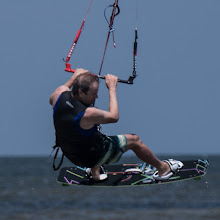Asia wants windsurfing reinstated
04:45 AM Jul 03, 2012
Source Todayonline.com
http://www.todayonline.com/Sports/EDC120703-0000022/Asia-wants-windsurfing-reinstated
SINGAPORE - Windsurfing's shock omission from the 2016 Olympic Games may not be cast in stone yet.
At an Asian Sailing Federation (ASAF) meeting here last Saturday,
member nations reached a unanimous decision to call for a re-vote by the
International Sailing Federation (ISAF) at its next meeting in Ireland
this November to re-instate windsurfing as a medal event for the Rio
Games.
"We're now finding out the process to present a
strong case for windsurfing to ISAF," said SingaporeSailing CEO Tan
Wearn Haw.
"There has been talk the International Olympic
Committee may drop sailing from the Olympics because it is not the most
spectator-friendly sport, so for ISAF to drop one of sailing's more
popular disciplines is surprising."
Thirty-four delegates representing 17 member nations attended Saturday's meeting at ONE15 Marina.
In a shock decision at the ISAF mid-year meeting in Italy,
windsurfing was axed from the 2016 Olympics and replaced with
kiteboarding.
However, Israel sailing chief Yehuda Maayan
claimed the shock result came after a Spanish delegate made a wrong vote
during the meeting, possibly due to confusion and the language barrier.
Singaporean Audrey Yong's bronze at the 2010 Youth Olympic Games helped promote interest in the sport here.
Timothy Khoo, president of Windsurfing Association Singapore - an
affiliate of SingaporeSailing - said: "The decision to drop windsurfing
was a devastating blow and there are concerns interest could dwindle as
it is no longer an Olympic sport.
"It is a wake-up call for windsurfing to keep re-inventing ourselves to stay relevant." TAN YO-HINN
 Appeal to US Sailing Website
Appeal to US Sailing Website